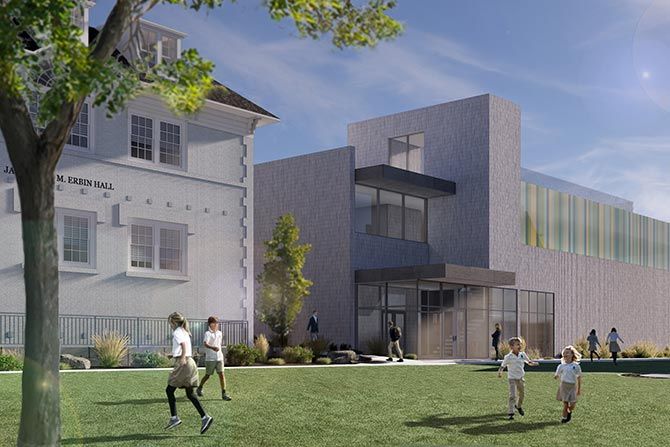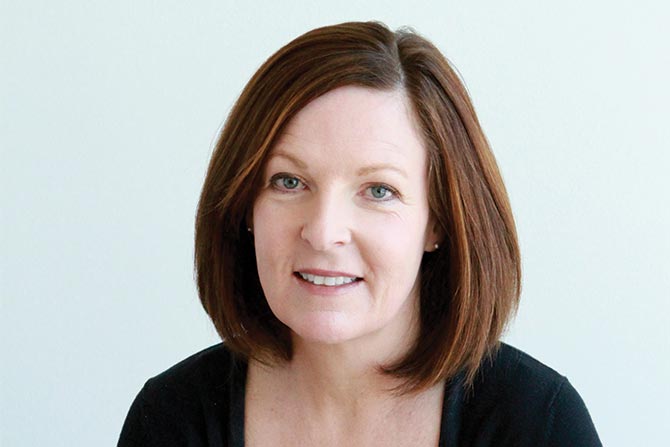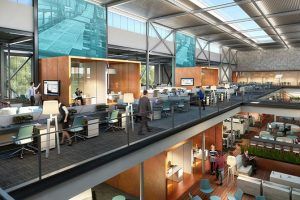I really hope to contribute a body of work in architecture that endures for generations.
Anne Mooney is an architect and design principal and the co-founder of Sparano + Mooney Architecture, an award-winning architectural practice with offices in Salt Lake City, UT, and Los Angeles, CA. Her work has been internationally recognized for its research-based conceptual approach to architecture and has been featured in numerous exhibitions and publications in North and South America, Europe, and Asia.
She is also a Professor of Architecture in the College of Architecture + Planning at the University of Utah. Anne teaches applied research design studios and seminars in contemporary design theory and professional practice.
As a LEED-accredited professional, Anne is experienced in sustainable building systems and technologies and consults with public and private entities on sustainable architectural design.
Her distinguished body of work and commitment to the community has led to her being inducted into the 2023 AIA College of Fellows. We recently sat down with Anne and discussed her career and Fellowship. What follows are excerpts from our conversation. We hope you enjoy getting to know more about her as much as we did.

When did you first become interested in architecture as a career?
When I was young, I never knew an architect. So, I had no experience or background in architecture. Architecture was never offered to me as a career option. I come from a family that works in the aviation industry, and, if anything, I might have been on track to become a pilot.
Towards the end of earning my undergraduate, I took a general ed design studio class, and I just fell in love with architecture. I knew from that moment that architecture was my thing. But I was about to graduate, and it was kind of too late to switch gears. So, I ended up completing my undergraduate education at the University of Utah, not in architecture.
But then, I discovered a workshop class taught by Gail Della-Piana, a legend in Utah. She followed the curriculum of Tom Kass. After I took that class, I knew I was going to study architecture, and I wanted to do that professionally.
After I graduated from the University of Utah, I moved to Los Angeles and started studying architecture, taking night classes to build a portfolio and working in a company that specialized in interior design.
Then, I went to Graduate School in New York at Columbia University. I also studied at the Southern California Institute of Architecture (SCI-Arc) in Los Angeles and in Switzerland. I loved every moment of being in school and studying architecture.
It’s really important to find something that you love, and your education just flows after that.
What college degrees and certifications have you earned?
I earned a Master of Architecture with Distinction from SCI-Arc and a Bachelor of Arts in Business from the University of Utah.

Has your career taken you anywhere you didn’t expect?
While I was in school, one of my professors identified me as somebody who could be a potential teacher. I never saw that in myself, but I’ve had a dual career as both a practitioner and also an architectural educator — I never expected to have two jobs my whole life.
Which one of your current projects excites you the most?
That’s tough, I always love the projects that I work on. For example, this week, we presented a design for a new Civic Center for a special community in Utah. This is a really exciting project because we’re working hard to deliver a landmark building for this organization and nonprofit that has an incredible history in our state and in our region.
What has been your proudest moment as an architect?
I have to say this milestone of being recognized as a Fellow and being included with the top architects in the country is an honor. It’s very gratifying to have been recognized with that award this year.
What do you hope to contribute from your work?
I really hope to contribute a body of work in architecture that endures for generations. This requires a level of design and quality that allows a building to be timeless. It’s definitely what I strive for in our office. We’ve developed a pretty rich and rigorous design process, and we’ve been honing that for the last couple of decades. Hopefully, that leads to a body of work that will stand the test of time, but that’s for the next generations to determine, and that’s what I’m working toward.
Have you won any awards for your designs? What elements from those projects would you like to see shape the future of the profession?
Well, the firm has won quite a few design awards, up to 50. We, again, take our design process seriously, and our rigorous process leads to design excellence. Some of the elements that we focus on are thinking about materials and the unique ways they are used, the translation of the concept into materials, and detailing. It’s not just about form, it’s about spatial quality and experience and then, a bit of surprise.
What does sustainability mean to you?
I think, at its core, it means doing the right thing during all phases of the design process: looking at siting the building, using passive design strategies; strategic placement of the building if possible; sizing of the openings and the overhangs; specification of materials and systems; and then looking at sustainably harvested materials. Additionally, tracking the production cycle of materials and making sure non-toxic materials and finishes are used. We also need to be paying attention during the development of the project as the engineering team is participating, and then through the construction administration phases to make sure that substitutions aren’t being made. If substitutions are made, it might compromise the sustainability goals that were set at the beginning of the project. It’s a holistic approach to architecture; it’s not one single thing.
What do you see as the largest barrier to sustainability in your profession?
I think the largest barrier is just the complexity of our work. Everyone must share the same goals to deliver the most sustainable project, and that doesn’t always happen. Architecture is a team sport. It’s important that everyone involved in a project, from the designer and the engineer to the construction worker and the client and owner side, and even the regulatory agencies share the same goals to deliver the most sustainable project. Leadership in a project is important, and that can come from the client, owner, contractor, or architect. But ideally, it comes from everyone working together as a team.
What is the most effective step you’ve taken in your work toward a more sustainably built environment?
I think the most important thing that we do in our office is to set sustainability and performance goals for every project. Setting goals at the beginning of each project is just as important as measuring them when our projects are finished.

Where do you find inspiration?
I find inspiration in lots of different things: art, music, and film. But I think maybe, more than anything, we’re so lucky to be surrounded by natural beauty here in Utah, and nature is the number one place where I find inspiration. We are surrounded by some of the most spectacular landscapes in the world, and I don’t take that for granted. I find spending time in our mountains and in our deserts is a profound way to recharge and find inspiration, insights, and perspectives on challenges that I face.
What advice would you give to your peers on becoming an AIA Fellow?
I think the most important thing is to be consistent in your career with a focus on excellence. Additionally, we should all be looking for ways to be of service to others. I became a Fellow in the category of design, but I don’t think this would have happened without my interest and lifelong efforts of working to serve my community. I’ve been a teacher and a mentor for our students and emerging professionals. I work on school boards and have been on the Utah Arts Council as well as serving on the AIA Board of Directors. All of those provide rewarding and important activities that get me out into the community. So, I think the advice would be to find a way to be of service to your community, to our profession, and to the emerging professionals that are finding their way in our profession. It’s bigger than just a body of work, it’s our impact on the community that makes a difference.






